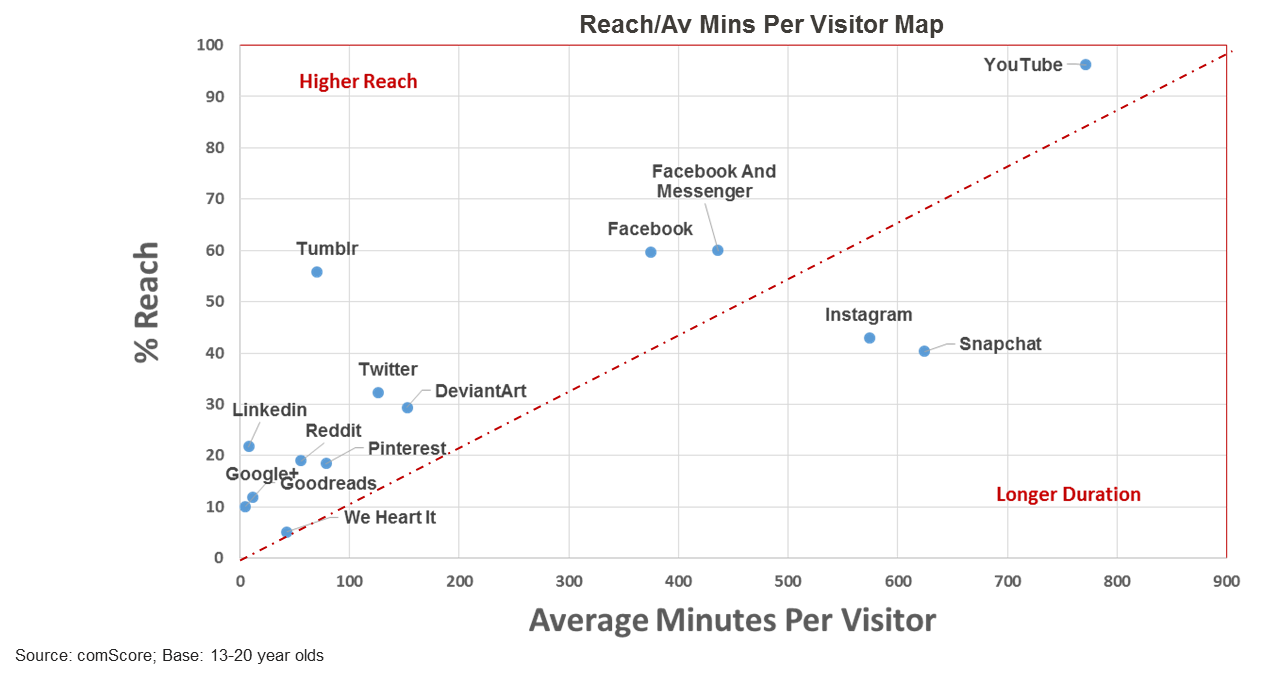
Social media is deeply embedded in our culture and has emerged as a leading indicator of overall media consumption. Its burgeoning power can be vividly seen when assessing the consumption patterns, habits and trends of Gen-Z. Gen-Z are individuals who were born after the mid-1990s, and they have grown up in a society where the Internet and mobile devices were always present.
Graphically, we can portray an audience’s media preferences simply by creating a map using two key metrics: The monthly reach of a media property and the average monthly minutes per viewer of that property.
Here is the social media map for 13-20 year olds by those two measures:

The tipping point on this graph is the top right-hand corner, where both monthly reach and consumption is at its peak. For Gen-Z, this area is dominated by YouTube, which has solidified itself as the preeminent sharing video platform, overshadowing the otherwise omnipotent Facebook. Critically, this is not the case with older demographics.
More broadly, when we dissect the media-use map with a diagonal line (shown in red), we see that almost all media appear above the line. This is a decisive characteristic of the map, signifying that, for most media properties, higher reach eclipses duration of consumption. The overarching value of reach in media consumption is well-known. In 2009, the Ehrenberg-Bass Institute demonstrated how reach has a pivotal influence in consumers’ total hours of TV network viewing across the world, from the U.S. to Australia.



